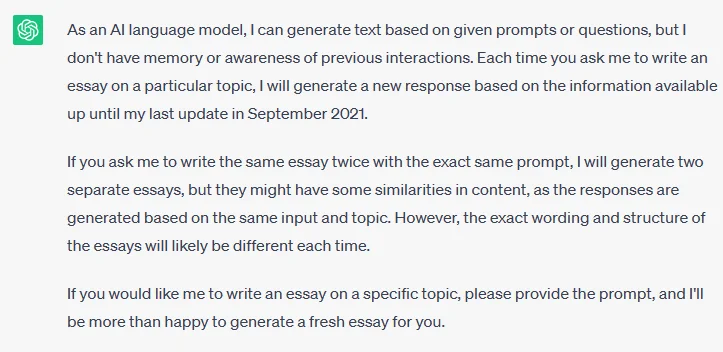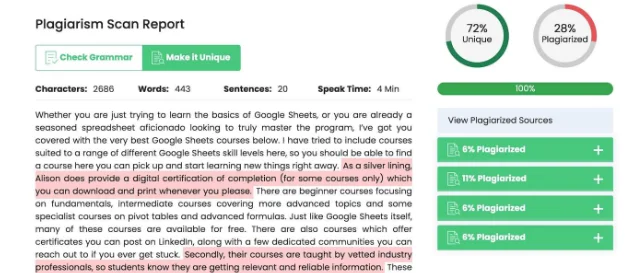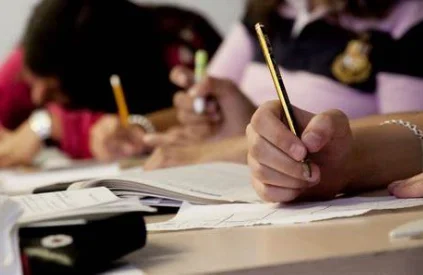Whether ChatGPT’s composition repeats itself and exposes it to detection emerges in the area where artificial intelligence and human language coexist. We set out on a trip to investigate the complexities of ChatGPT’s writing prowess to uncover the mysteries underlying this digital sorcery.
This write-up explores the originality of ChatGPT’s responses, its capacity to avoid repetition, and the safeguards to avoid predictability. Read on
Does ChatGPT Write the Same Essay Twice?

Even though ChatGPT tries to offer varied and distinctive solutions, it is practical to produce the same essay when given the same prompt.
Although the model has a great capacity for producing original information suited for the given situation, its replies are influenced by trends in the training set.
Consequently, ChatGPT may generate comparable or identical responses if the input and context are left unchanged.
However, users can fully utilize ChatGPT’s ability to produce original and distinctive essays by adding even minor alterations to the question or participating in dynamic and evolving conversations.
Why AI Gives the Same Answer for the Same Prompt
ChatGPT generates answers based on patterns and instances discovered in the training data. The model’s algorithms process the data and produce a response similarly when given the same prompt.
Although efforts have been made to provide randomness and diversity, the model’s capacity to consistently generate distinctive outcomes for each prompt has intrinsic constraints.
The model cannot remember whether it has previously provided the same response because it needs to have the memory of previous interactions. A persistent difficulty in natural language processing is striking a balance between novelty and consistency in AI-generated responses.
Can you be Caught Using ChatGPT?
Identifying the unethical or dishonest usage of AI language models like ChatGPT may be possible. Presenting someone else’s work as your own through plagiarism is a serious offense.
It can be determined if someone uses ChatGPT to create content without giving correct credit or tries to pass it off as their original work using various techniques, including plagiarism detection tools, manual review, or reader discernment.
It is commonly accepted that plagiarism is wrong, both ethically and in many academic and professional contexts. When utilizing created content, it is crucial to use AI techniques properly, respect intellectual property, and give due acknowledgment.
How Teachers Catch Students Writing Essays with ChatGPT
1. Plagiarism scan

The employment of ChatGPT or any other artificial intelligence technology to produce essays is easy for teachers to spot because they deploy various strategies to do so. Using plagiarism detection software is one of the key techniques that can be taken.
These technologies check students’ writings against a massive database containing various sources, such as web articles, academic papers, and other students’ work.
Even so, the software will raise a red signal for any cases of plagiarism if it finds any similarities. In addition, teachers may find discrepancies in the student’s writing style, tone, or terminology utilized in the essay, which may differ from the student’s previous work.
To identify whether a student has copy-pasted AI-generated essay, teachers should use the right software made to detect such. Paying close attention to a student’s topic comprehension during group discussions or oral examinations can also show gaps in the student’s knowledge that need to be reflected in the substance of the student’s essay.
2. Comparing answers
Teachers can determine whether students utilized ChatGPT to compose their essays by examining the content and structure of their students’ responses. More importantly, teachers can establish an idea of a student’s writing style, level of knowledge, and language competency by evaluating the student’s past work or participation in class discussions.
Suspicion is raised if noticeable deviations from these typical patterns are found in the essay. The instructor might observe discrepancies in the student’s use of vocabulary, a sudden improvement in the quality of the student’s writing, or a departure from the student’s regular arguments or points of view.
The instructor can determine whether or not the student could benefit from employing AI technologies like ChatGPT by comparing the essay to the student’s past work.
3. Two Similar Essays

Teachers can employ various techniques to determine the use of ChatGPT. First, they can analyze the content of two or more student’s submitted papers and identify pupils using ChatGPT to create their essays.
When two distinct students’ writings contain text that is startlingly close to one another or is entirely identical, this raises a red flag.
Teachers can discover probable instances of student collaboration or AI tools such as ChatGPT by cross-referencing students’ essays.
They may also observe that the essays share an exceptionally similar writing style, terminology, or arguments presented in each of the pieces.
It is common practice for teachers to evaluate the uniqueness and originality of the work produced by each student. The existence of two virtually identical essays can be seen as evidence of the unlawful usage of AI-generated content.
4. Wrong CHatGPT answers
When a student hands in an essay with either wrong or nonsensical information, or that knowledge does not correspond with either the curriculum or the issue at hand, it raises questions about where the student obtained the information.
ChatGPT, despite its capability, could be more flawless; it can create responses that are inaccurate concerning facts, or that lack logical consistency. Due to their extensive knowledge of the material, teachers are in the best position to spot any anomalies or inconsistencies.
Inconsistencies in a person’s knowledge, the level of their understanding, or even their language skills can indicate the use of AI-generated content and should urge additional examination.
5. The Sudden Improvement in Writing Quality
If a student’s writing suddenly and noticeably improves, this can tip off teachers that the student is using ChatGPT, which is one-way teachers can catch pupils using the app. If a student’s essay demonstrates a discernible increase in intelligence, vocabulary usage, or general coherence inconsistent with the student’s past work, this raises questions about the student’s honesty.
A change of this magnitude, occurring so suddenly, would point to the use of content generated by AI in the process of writing the article. Teachers carefully analyze the growth of a pupil’s writing ability over time to uncover any irregularities and determine whether or not the student could benefit from more guidance.
